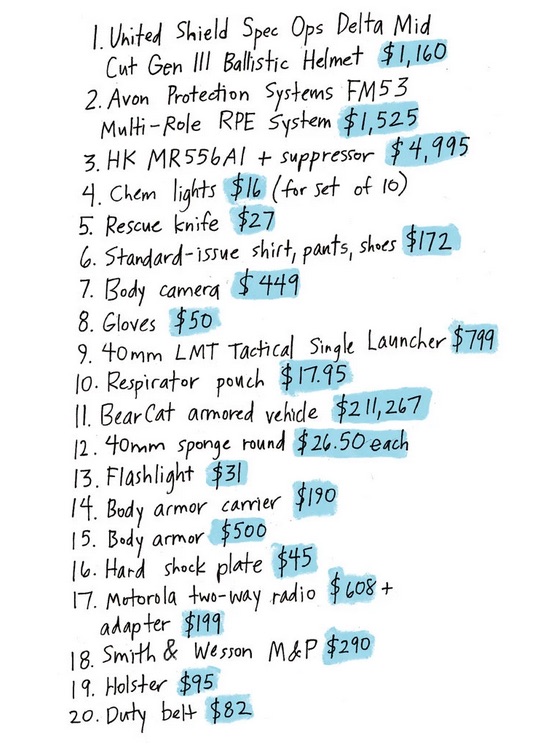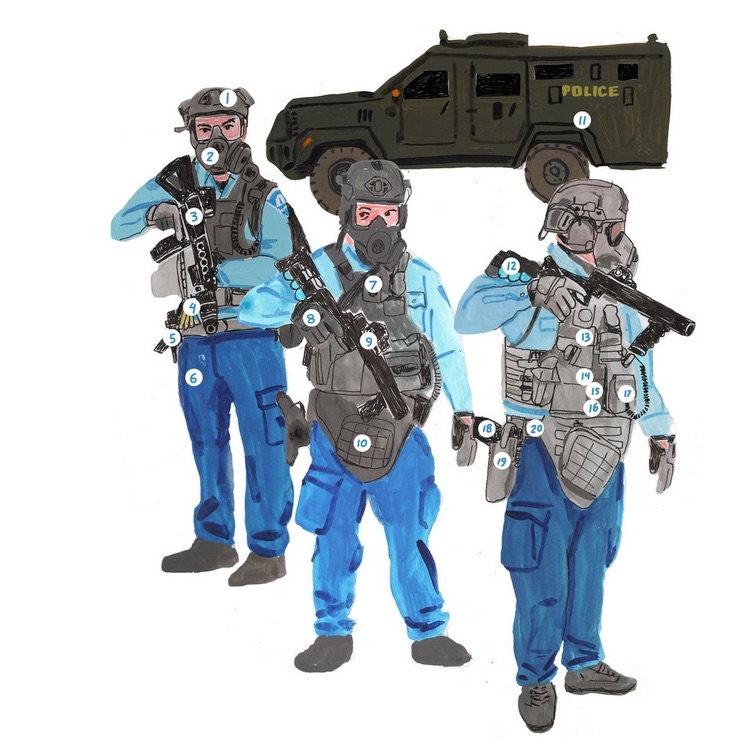Note from H. Cobban: I started producing this resource page on behalf of the Peace & Social Concerns Committee of the Friends Meeting of Washington (Quakers), on June 12. It may be a work-in-progress for some time. Members and friends of the FMW community are invited to send along suggestions, including links to additional resources, that they think can make this page more useful. Please do so by emailing me: helena@justworldeducational.org. Thanks!
You can print out this page or share its contents as a PDF. To do so, just click on the “printer” icon on the right of the page. You will be sent to a place where, by hovering your cursor over the text or images, you can delete whole paragraphs (including this one) or reduce the size of images, prior to printing.
Washington DC, with its special status as a non-state territory without voting rights in Congress, has become one of many cities around the country that have recently seen sharp confrontations between #BlackLivesMatter supporters and law enforcement officers. Here in DC, the law-enforcement contingents have come from many disparate bodies, of which only the Metropolitan Police Department (MPD) comes under the command of Mayor Bowser and her Police Chief. Others, including the DC National Guard, have been commanded by federal bodies. The Mayor has quite rightly (and with, as of now, apparent success) pushed the federal government to withdraw its intimidating array of coercive forces away from the confrontations with BLM-inspired gatherings and events.
But the District’s residents still have to deal with a police force that has a long history of excesses and failed efforts at reform. As recently as the evening of Monday, June 1, the MPD committed a number of violent acts, including when it forcefully pushed and “kettled” demonstrators into a small area of Swann St NW near 15th St. (Read a good account of this at bit.ly/DC-kettling.)
In this situation, calls for deep reform of the DC police and for DC to “Defund the Police” have become much more vocal throughout the city.
Police reform efforts
On June 9, the DC City Council unanimously adopted a sweeping piece of new police-reform measures, the “Comprehensive Policing and Justice Reform Emergency Declaration Resolution of 2020”. The resolution passed despite Mayor Bowser urging more time for deliberation. Its full final text can be found at bit.ly/DC-Council-Res.
The resolution includes numerous helpful provisions including:
- Requiring that law enforcement officers be educated on matters like de-escalation tactics, racism and white supremacy, and the responsibility to report misconduct by other officers;
- Banning the use of chokeholds in all cases;
- Requiring more transparency around body cameras;
- Banning the MPD from hiring members who were previously fired or forced to resign from another law enforcement agency for misconduct or disciplinary reasons;
- Restoring voting rights for people serving time for felonies;
- Ensuring any new collective bargaining agreements with the Fraternal Order of Police or Metropolitan Police Department Labor Committee don’t prevent disciplinary actions against force members
You can find a fuller description of its provisions here: bit.ly/DC-res-digest.
How the MPD gets funded
On June 15, the City Council will be holding budget hearings for the Judiciary and Public Safety component of the FY 2021 budget, which starts this October 1.)The budget proposed by the Mayor is always a hefty document. If you want to download all 333 pages of its Executive Summary you can do so here. The key line regarding MPD funding comes on p. 268 of the PDF, and shows that the mayor proposes spending $540.254 million of General Funds on the MPD in FY 2021– an increase of $17.494 million over FY 2020.

Earlier in her budget proposal (p.5 of the Preamble), Mayor Bowser or her budget director explains that this proposed increase is, “primarily attributable to additional support of the Patrol Services bureau.”
The total General Fund spending proposed for Public Safety and Justice come to $1,353.5 million. (In the budget this is supplemented by some spending from other sources, primarily the federal government, most of whose funding goes into the separate line-item for Homeland Security and Emergency Management.) Total proposed General Fund expenditures for all categories come to $9,824.8 million.
The call to defund the police

Over the past six years, BLM and other justice activists around the country have been rallying around a call to “Defund the Police”, and the many instances of police violence we have seen around the country in recent weeks have amplified that call.
On June 4, The American Friends Service Committee published a well-argued piece in which long-time staff member Mary Zerkel laid out “6 reasons why it’s time to defund the police”. Here are the reasons:
- Policing in the U.S. was established to maintain white supremacy.
- Policing doesn’t keep us safe.
- Body cameras, trainings, and other so-called reform measures will not end cycles of police violence.
- Policing diverts billions of dollars from schools, health care, and other vital programs that need more funding to strengthen our communities and support shared well-being.
- Black organizers are calling for divestment from policing and investment in human needs across the country.
- Our tax dollars should be invested in more humane and just alternatives to policing.
Mary Zerkel backs up all these points with copious examples and sources. You can read her piece in full at bit.ly/AFSC-6.
Other resources on police costs and militarization
Costs of police gear:
On June 5, the New York Times published a powerful graphic in which Julia Rothman and Shaina Feinberg illustrated the high cost of the super-militarized types of “riot” gear too many US cops are equipped with. (You can see the whole thing at bit.ly/Cops-gear.)
Military gear for police: The 1033 program:
Since 1997, thousands of police forces around the country have acquired military-style gear from the Pentagon under something called the “1033 program”. In 2014, in the wake of the Ferguson, MO protests (that gave birth to the present-day BLM movement), NPR published an investigation that found that large amounts of heavy military equipment had been transferred to police forces under this program. These included:
- 606 mine-resistant, ambush-protected vehicles, or MRAPs
- 11,959 bayonets
- 3,972 combat knives
- $124 million worth of night-vision equipment, including night-vision sniper scopes
- 479 bomb detonator robots
- 50 airplanes, including 27 cargo transport airplanes
- 422 helicopters…
You can read that whole NPR report at bit.ly/1033-prog.
After Ferguson, Pres. Obama dialed back some on the transfers made under the 1033 program; but Pres. Trump then restored them.
A helpful broader survey of the dangers of militarized policing can be found at this page on the website of the (rightwing-leaning) Charles Koch Institute: bit.ly/Koch-policing.
Materials from the Leadership Conference on Civil & Human Rights:
LCCHR is a broad national coalition of civil rights organizations with a very informative website. In 2019, they published a 416-page report on Policing, the PDF of which can be downloaded here. Along with that, they also published a 153-page Toolkit (PDF here.)
Other recently published resources:
** Annie Lowrey, “Defund the Police”, in The Atlantic, June 5, 2020. This article has some very thought-provoking international comparisons. She notes,
“The U.S. spends 18.7 percent of its annual output on social programs, compared with 31.2 percent by France and 25.1 percent by Germany. It spends just 0.6 percent of its GDP on benefits for families with children, one-sixth of what Sweden spends and one-third the rich-country average… Meanwhile, the U.S. spends twice what Europe does on the military. It spends more on domestic public-safety programs than virtually all of its peer nations, double what Singapore spends in GDP terms. It locks up millions, with an incarceration rate many times that of other NATO countries…
Does this spending make the country safer than its peers? No. Violent crime has reduced markedly in the past few decades. But America’s murder rate is still higher than the average among member countries of the Organization for Economic Cooperation and Development, and about four times the rate in Canada. The number of rapes, adjusted to the size of the population, is four times higher than it is in Denmark. Robberies are more than twice as common as they are in Poland. Gun violence is rampant; deaths and injuries from firearms among children are considered “a major clinical and public health crisis.” And Americans absorb far, far more violence from police officers. As a Guardian investigation demonstrated, the police shot dead 55 people in 24 years in England and Wales. There were more fatal police shootings in the first 24 days of 2015 in the U.S.
A thin safety net, an expansive security state: This is the American way. At all levels of government, the country spends roughly double on police, prisons, and courts what it spends on food stamps, welfare, and income supplements.
** Maggie Koerth and Jamiles Lartey, “Why So Many Police Are Handling the Protests Wrong“, publ. by The Marshall Project (online), June 1. They argue that often the presence, demeanor, and behavior of police at demonstrations inflames tensions, rather than calming them. You can listen to Jamiles Lartey expanding on this argument in the first 20 minutes of this interview with Terry Gross on “Fresh Air”, June 13.

